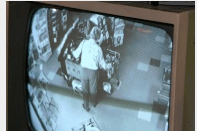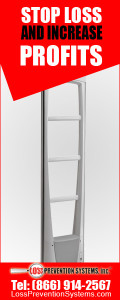 It was 4:30am on a Tuesday morning. My company cell phone pierced through the quiet halls of my house. At first, I didn’t get out of bed; perhaps it was a wrong number. Silence. As I doze back off, I hear the familiar tone once again. Who could be calling me and for what reason at this hour? I let it ring. I hear the chirp of the voicemail. Before I can muster the energy to get out of bed, I hear my personal phone ringing. This one is next to me on the night stand. Something is wrong, I immediately think to myself. When I reach for my phone in the middle of the dark room, eyes still blurry, I see the caller ID. It’s a sheriff’s deputy that I’m good friends with. My heart is in my throat as I answer. “You’re morning crew was just robbed at gunpoint. Get to the store now.”
It was 4:30am on a Tuesday morning. My company cell phone pierced through the quiet halls of my house. At first, I didn’t get out of bed; perhaps it was a wrong number. Silence. As I doze back off, I hear the familiar tone once again. Who could be calling me and for what reason at this hour? I let it ring. I hear the chirp of the voicemail. Before I can muster the energy to get out of bed, I hear my personal phone ringing. This one is next to me on the night stand. Something is wrong, I immediately think to myself. When I reach for my phone in the middle of the dark room, eyes still blurry, I see the caller ID. It’s a sheriff’s deputy that I’m good friends with. My heart is in my throat as I answer. “You’re morning crew was just robbed at gunpoint. Get to the store now.”
I don’t think I even gave my friend a response before leaping out of bed. I quickly get dressed and race down stairs. Those two missed phones calls were from a panicked and frantic store manager. The other from the general manager. I jump in the car and speed across town; waking the VP of Loss Prevention, the regional VP and the media relations department. All with the news that no LP manager wants to say. “Our team was just robbed. I have no info on the wellbeing of our employees. I’ll update you as soon as I gather info.”
I get to the store and see close to a dozen police units. There’s crime scene tape and the local new stations are already setting up shop. I rush to the front door and see that it’s been shattered. Later, I find that the robber fired two shots from a .45… one round came within inches of a stocker, into the door, gaining entry into the store. At this point, I don’t care about the damage, I don’t care about the money. I head straight to the staging area and am suddenly taken into an embrace by the morning manager; someone I’ve worked alongside for 10 years. She’s shaken up, but OK. So is the rest of the team. I finally have good news. I send a quick text to my boss that all employees are safe; no injuries. We lost $9k and have a broken door. All replaceable.
It was no accident that our team made it out of this ordeal safely.
Every single week, our company’s robbery policy and procedure is covered with our teams. While a robbery can happen at any time of the day or night, they are most likely going to occur early in the morning, or late at night. Training your team to react to this scenario greatly increases your chance of getting out unharmed. So we train, constantly on three very important points.
- Comply – there is no need to argue with a guy with a gun. Everything in the store can be replaced. The company brings in several billions of dollars each year; the amount of cash that can physically be taken is nothing compared to your safety.
- Give them whatever they want — if they want cash, give them cash. If they want the entire electronics department, let em’ have it. If they want you to open each cash register for the change, then that’s what we’re going to do in order to get them out. Do not argue, do not deny. Your job is to get them out of the store as quickly as possible and without incident. Let our cameras and law enforcement partners’ worry about trying to identify them.
- Never, under any circumstance, contact the police while there is an active robbery – We never want a robbery to turn into a hostage situation. If the police show up quickly, the robbers could panic and hold the team hostage. There is also the possibility of a shoot-out with police and the potential for injury to the team. This point cannot be stressed enough. Wait until you are positive that the robber has fled the scene before making that call; because once you do, you’re going to have every free unit across the city rushing to your doors.
While I hope to never have to see one of my teams go through an ordeal such as this again, I know that there will always exist the remote possibility of it happening again; whether it’s to one of my stores, or to one of yours. If you’ve never thought about implementing a robbery policy/procedure before, I would highly suggest doing so now. The better you plan for such an act, the better your chances of coming through without injury. Remember, money and merchandise can be replaced; a team member cannot.

 Employee theft continues to rise. In some retail settings it’s surpassed customer theft. There are a variety of reasons for the increase. One of them is that many managers have a hard time believing that “My people would do such a thing”. And because they have a hard time believing it they don’t take steps to combat it.
Employee theft continues to rise. In some retail settings it’s surpassed customer theft. There are a variety of reasons for the increase. One of them is that many managers have a hard time believing that “My people would do such a thing”. And because they have a hard time believing it they don’t take steps to combat it.
 Are you confused about how to stop shoplifters? Many Retailers are. Often I hear something like “I have a CCTV camera system to stop shoplifters”. The reality is that shoplifters couldn’t care less. Cameras are a very tiny deterrent to a shoplifter. They know you do not have the time or payroll dollars to actively watch. And it is easy enough to create a diversion or simply take your merchandise and move to another location in your store that does not have camera coverage.
Are you confused about how to stop shoplifters? Many Retailers are. Often I hear something like “I have a CCTV camera system to stop shoplifters”. The reality is that shoplifters couldn’t care less. Cameras are a very tiny deterrent to a shoplifter. They know you do not have the time or payroll dollars to actively watch. And it is easy enough to create a diversion or simply take your merchandise and move to another location in your store that does not have camera coverage.  EAS is great isn’t it? For the most part, if someone is stealing product “X,” you slap on a quick tag or label and you see a pretty substantial reduction in shrink (for the most part.… Live in the real world). As my LP career has progressed over the years, I’ve seen EAS change drastically. I’ve also seen what retailers apply EAS tags to change as well. Often times, I scratch my head in disbelief at the ideas that come out sometimes and others, I pull my hair out because we could have been more proactive with tag placement. I’ve also seen some fantastic ideas from my store teams on some not so standard tagging procedures.
EAS is great isn’t it? For the most part, if someone is stealing product “X,” you slap on a quick tag or label and you see a pretty substantial reduction in shrink (for the most part.… Live in the real world). As my LP career has progressed over the years, I’ve seen EAS change drastically. I’ve also seen what retailers apply EAS tags to change as well. Often times, I scratch my head in disbelief at the ideas that come out sometimes and others, I pull my hair out because we could have been more proactive with tag placement. I’ve also seen some fantastic ideas from my store teams on some not so standard tagging procedures. Everyone I know loves a good “dumb criminal” story. In fact, I can’t go a day without someone (store managers, district managers, executives, family…) asking me to tell a crazy shoplifting story. I have a top 10 list that I usually gravitate towards, but after yesterday, I may have to change it to a top 11.
Everyone I know loves a good “dumb criminal” story. In fact, I can’t go a day without someone (store managers, district managers, executives, family…) asking me to tell a crazy shoplifting story. I have a top 10 list that I usually gravitate towards, but after yesterday, I may have to change it to a top 11. Often overlooked for small businesses is the dire need for a suitable burglar alarm system. I talk about EAS placement and CCTV all the time. Those are rendered absolutely useless is someone busts in through the back door. If your burglar system isn’t up to standards, you run the risk of losing everything.
Often overlooked for small businesses is the dire need for a suitable burglar alarm system. I talk about EAS placement and CCTV all the time. Those are rendered absolutely useless is someone busts in through the back door. If your burglar system isn’t up to standards, you run the risk of losing everything.